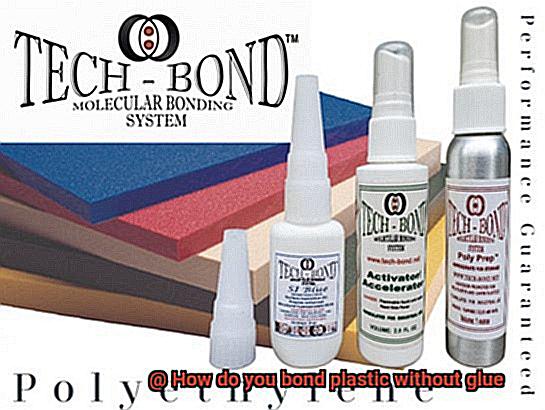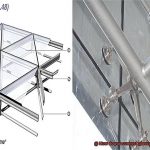Heat welding is a fascinating process that allows for the bonding of plastic pieces without the need for glue. This technique involves the application of heat to the plastic, causing it to melt and become pliable. The melted plastic is then pressed together, creating a strong and seamless bond. Heat welding is widely used in industries such as automotive, construction, and manufacturing.
To perform heat welding, a heat source is required. This can be a hot air gun or a specialized welding tool that generates controlled heat. The plastic pieces to be bonded are carefully positioned together, and the heat source is applied to the joint area. As the plastic heats up, it softens and becomes malleable, making it easier to mold and shape.
Once the plastic reaches the desired temperature, pressure is applied to the joint using a welding rod or other tool. This ensures proper contact and fusion between the plastic pieces. The heat source is then removed, allowing the plastic to cool down and solidify, creating a bond that is as strong as or even stronger than the original material.
Heat welding offers several advantages over traditional bonding methods:
- Strong bond: By fusing the plastic pieces together, heat welding creates a molecular bond that is extremely durable.
- Precise control: The temperature and duration of heating can be adjusted to suit different types of plastics, ensuring optimal results.
- Cost-effective: Heat welding eliminates the need for additional materials such as adhesives or solvents, making it a cost-effective option.
- Environmentally friendly: Unlike some bonding methods that produce toxic fumes or waste materials, heat welding is an environmentally friendly choice for joining plastic.
However, there are also limitations to consider:
- Suitability for certain plastics: Not all plastics are suitable for heat welding, as some may have low melting points or release toxic fumes when heated.
- Skill and experience required: Achieving proper bonding results with heat welding requires some level of skill and experience. It is important to follow safety guidelines and instructions provided by manufacturers.
Solvent Welding
Contents
Solvent welding is an ingenious technique used to bond plastic without the need for conventional glue or adhesive. Instead, it relies on a specialized solvent that softens the plastic surfaces, allowing them to seamlessly fuse together. This method has found widespread application across various industries, including plumbing, automotive, and construction.
One of the key advantages of solvent welding lies in its ability to create a seamless bond between plastic pieces. Unlike glue, which can weaken over time or under certain conditions, solvent-welded joints tend to be exceptionally strong and durable. They exhibit remarkable resistance to heat, moisture, and other environmental factors.
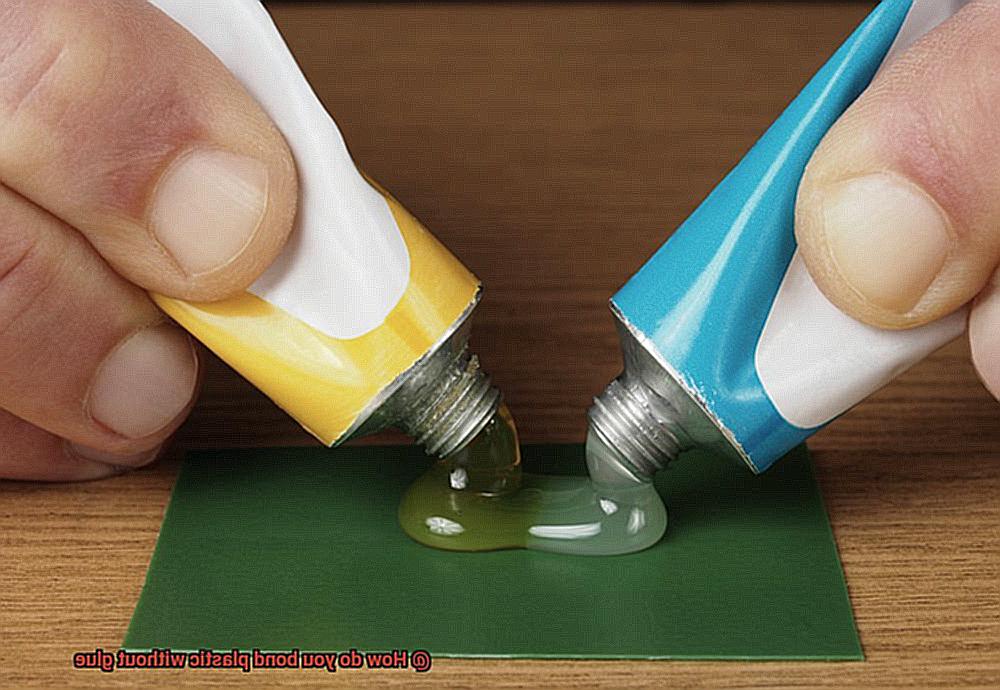
Another notable advantage of solvent welding is its compatibility with different types of plastics. Some plastics may pose challenges when it comes to gluing them together due to their unique chemical composition or surface characteristics. Solvent welding circumvents this issue by effectively fusing these plastics together, regardless of their compatibility with traditional adhesives.
In addition to its effectiveness, solvent welding also boasts cost-effectiveness. Compared to other bonding techniques like mechanical fastening or ultrasonic welding, solvent welding proves to be a more economical choice. The solvents used in the process are relatively inexpensive, making it a viable option for large-scale production or projects.
Furthermore, solvent welding stands out as an environmentally friendly bonding method. It produces no harmful byproducts or waste materials. Unlike glue bonding methods that may require the use of adhesives containing volatile organic compounds (VOCs) or other toxic substances, solvent welding offers a more sustainable alternative.
Lastly, solvent welding exhibits impressive versatility. It can be employed to join plastic parts of various shapes and sizes, making it suitable for bonding both small and large components. This adaptability makes solvent welding a versatile method that can be applied to different applications.
Ultrasonic Welding
Ultrasonic welding is a cutting-edge technique that revolutionizes the way plastic is bonded together. By harnessing the power of high-frequency vibrations, this method creates a bond that is both strong and durable, all without the use of glue. Let’s explore the fascinating world of ultrasonic welding and discover why it has become a go-to solution in various industries.
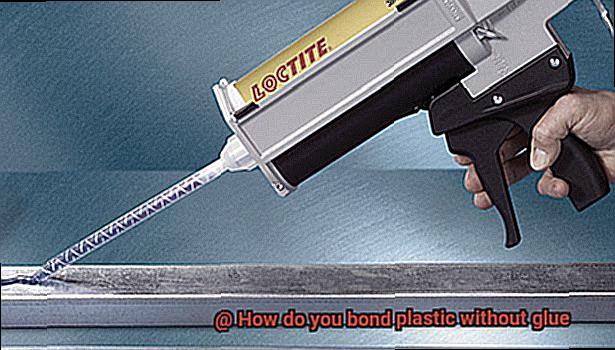
First and foremost, speed and efficiency are at the core of ultrasonic welding. Unlike traditional bonding methods that require tedious drying or curing time, ultrasonic welding delivers almost instant results. This lightning-fast assembly makes it a game-changer for high-volume production lines where every second counts.
But there’s more to ultrasonic welding than just speed. This technique eliminates the need for additional materials such as adhesives or solvents. That means no more worries about contamination or weak bonds caused by improper adhesive application. In fact, ultrasonic welding produces clean and precise welds that are strong enough to withstand the toughest challenges.
Speaking of strength, ultrasonic welding creates bonds that are often as robust as the surrounding plastic material itself. This makes it an ideal choice for applications that require superior structural integrity and resistance to stress or vibration. From automotive parts to medical devices, ultrasonic welding has proven its mettle across a wide range of industries.
And let’s not forget about versatility. Ultrasonic welding is compatible with a variety of thermoplastics, making it an attractive option for plastic assembly processes. Whether it’s electronics or packaging, this technique is ready to tackle any challenge thrown its way.
Mechanical Fastening
Mechanical fastening is a method of joining plastic materials without the use of adhesives or glue. It offers a reliable and efficient way to create strong and durable connections between plastic components. There are several techniques that can be used for mechanical fastening, each with its own unique advantages.
One commonly used technique is the use of screws and bolts. By drilling holes into the plastic components and inserting screws or bolts through these holes, a secure connection can be achieved. Tightening the screws or bolts with a screwdriver or wrench ensures a firm hold between the parts.
Another technique is riveting, which involves inserting metal fasteners called rivets through pre-drilled holes in the plastic components. The ends of the rivets are then deformed or “bucked” to create a permanent connection. Riveting is popular in industries like automotive and aerospace, where a high-strength bond is crucial.
For applications that require frequent disassembly, clips and snaps are often used. These small plastic components have interlocking features that allow them to snap or clip together, providing a secure connection that can be easily taken apart when needed.
Ultrasonic welding is an innovative technique that utilizes high-frequency vibrations to melt and bond plastic components together. It is fast, precise, and ideal for high-volume production lines. Ultrasonic welding offers superior structural integrity and resistance to stress or vibration.
Heat staking is another mechanical fastening technique that involves applying heat to specific areas of the plastic parts to soften them. Once softened, the parts are pressed together to form a bond. Heat staking is a great option when a strong and durable connection is required.
Adhesive Tapes
Adhesive tapes are the superheroes of the bonding world, offering a convenient and efficient alternative to traditional glue when it comes to bonding plastic materials. These incredible tapes are composed of a backing material, such as plastic or fabric, coated with a special adhesive substance that clings to plastic surfaces with unwavering tenacity.
In the vast universe of adhesive tapes, there are various types available, each possessing unique properties and benefits. Let’s explore some of the commonly used ones for bonding plastic:
- Double-sided adhesive tape: This versatile tape possesses adhesive on both sides, allowing it to unite two plastic surfaces seamlessly. It’s like a hidden force that binds them together, creating an invisible bond that remains unseen.
- Acrylic foam tape: Known for its extraordinary strength and flexibility, this tape can conquer any irregular surface. It forms an unbreakable bond between plastic materials and boasts impressive resistance to heat, moisture, and even chemical attacks.
- Specialized adhesive tapes: The battle against low-surface-energy plastics, such as polypropylene and polyethylene, has been won by specialized adhesive tapes. These warriors are specifically formulated to defeat the challenges posed by these difficult-to-bond plastics.
Now, let’s uncover the remarkable advantages of using adhesive tapes for bonding plastic:
- Immediate adhesion: With adhesive tapes, there’s no more waiting around for glue to dry or cure. They offer instant adhesion, saving precious time in production or DIY projects where efficiency reigns supreme.
- Resistance to temperature changes: These tapes are masters of adaptability, withstanding extreme temperature fluctuations without compromising their bond strength. They remain steadfast even in scorching heat or bone-chilling cold.
- Herculean strength: Adhesive tapes possess Herculean strength, ensuring a secure connection between plastic materials that can withstand various stresses and forces. They’re like invisible muscles reinforcing the bond.
- Easy application: Say goodbye to the mess and hassle of traditional glue. Applying adhesive tape is a breeze, eliminating the need for mixing, spreading, or clamping. It’s a convenient choice that saves time and keeps things tidy.
- Versatility: Adhesive tapes are versatile warriors, capable of bonding a wide range of plastics, both rigid and flexible. They can even bridge the gap between different types of plastics, forging a united front.
However, it’s important to remember that not all adhesive tapes are created equal. Some may not adhere well to certain plastics or lack the desired level of bond strength. To ensure success, choose the right type of adhesive tape tailored to the specific plastic material and application at hand.
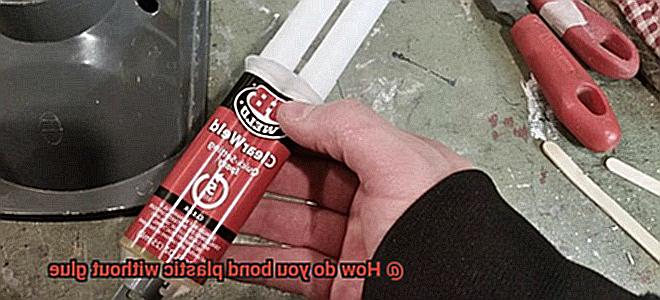
Factors Affecting Bond Strength

Bond strength is a critical factor in the successful bonding of plastics. Various factors affect the strength of the bond, including surface preparation, material compatibility, adhesive selection, environmental conditions, pressure or clamping, aging and durability, and testing and quality control.
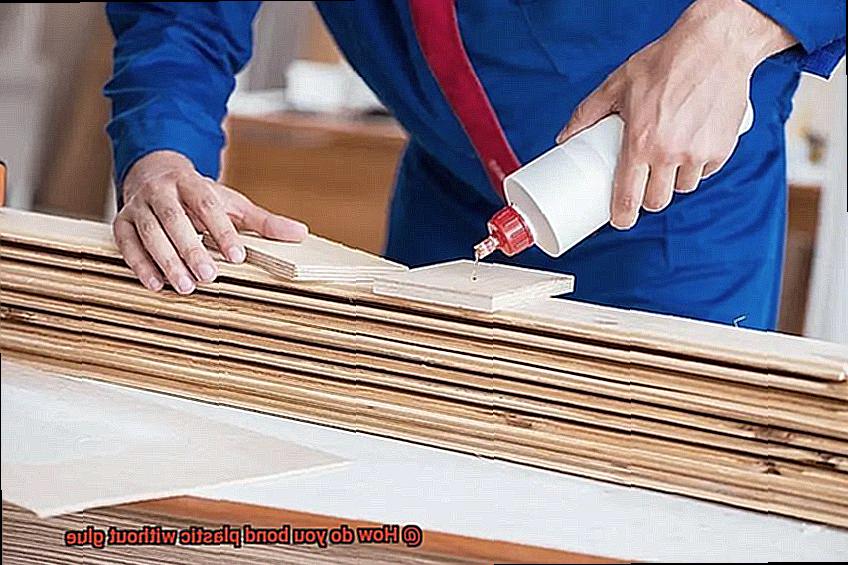
Surface preparation is crucial for achieving a strong bond. The surface of the plastic must be clean, dry, and free from any contaminants. Proper surface preparation can be achieved through methods such as cleaning with solvents, sanding, or using special adhesion promoters.
Material compatibility is another important factor to consider. Different types of plastics have varying chemical compositions and surface properties that can affect the adhesion process. Some plastics may require specific bonding techniques or adhesives that are compatible with their unique characteristics.
Choosing the right adhesive is essential for achieving a strong bond. Various types of adhesives are available for plastic bonding, such as epoxy, cyanoacrylate, polyurethane, and acrylic adhesives. Each adhesive has its own strengths and weaknesses, and selecting the appropriate one depends on factors such as the type of plastic, desired bond strength, and application requirements.
Environmental conditions can greatly influence bond strength. Temperature and humidity can affect the curing time and performance of adhesives. Some adhesives may require specific temperature ranges or humidity levels for optimal bonding results.
Applying pressure or using clamps during the bonding process helps ensure intimate contact between the adhesive and plastic surfaces. This promotes better adhesion by eliminating air pockets or gaps that might weaken the bond.
Over time, factors such as exposure to sunlight, moisture, chemicals, or mechanical stress can weaken the bond between plastics. Assessing the durability requirements of the bonded components is crucial for selecting an adhesive that can withstand these environmental factors and maintain its bond strength over time.
Conducting thorough testing and quality control measures is essential to ensure the bond strength of plastic joints. Various testing methods, such as lap shear tests or tensile tests, can be employed to evaluate the strength and performance of the adhesive bond.
Consulting Experts and Researching Options
Let’s explore the importance of seeking advice from professionals who specialize in plastic bonding and the benefits of extensive research.
When it comes to bonding plastic without glue, consulting experts can provide valuable insights and guidance. These experts may include chemists, engineers, or professionals with extensive experience in working with plastics. Their knowledge can help shed light on different bonding methods and the specific requirements for each type of plastic.
Benefits of consulting experts include:
Valuable insights and guidance from professionals who specialize in plastic bonding.
Recommendations on suitable bonding techniques based on specific applications and desired outcomes.
Advice on the compatibility of different plastics to avoid ineffective bonding methods.
Researching options is equally important. It involves exploring a wide range of techniques and understanding their applications, advantages, and potential drawbacks. By conducting thorough research, you can gain a deeper understanding of the available options and select the most suitable method based on your specific requirements.
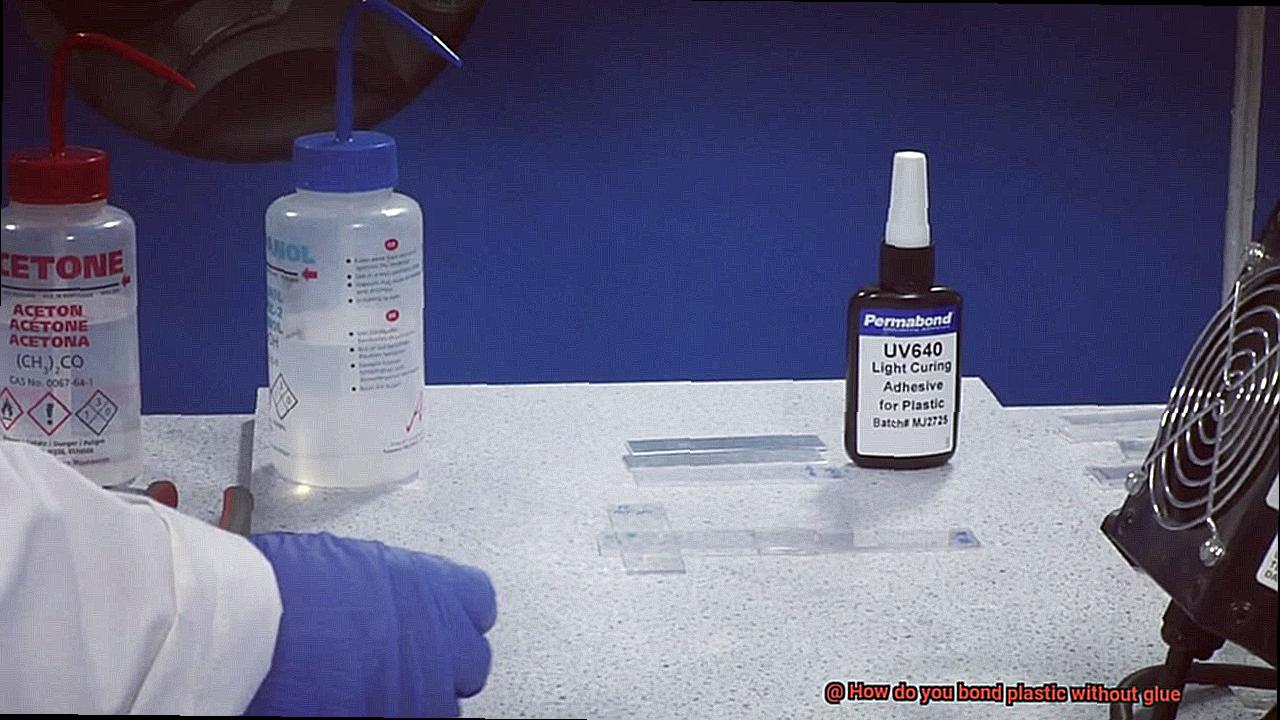
Benefits of researching options include:
Understanding the wide range of bonding techniques and their applications, advantages, and potential drawbacks.
Access to step-by-step instructions, troubleshooting tips, and best practices from various sources.
Exploring alternative solutions that may be more environmentally friendly or cost-effective.
yjr5LT6uUGs” >
Conclusion
In conclusion, the world of plastic bonding without glue is a vast and exciting realm, brimming with possibilities for DIY enthusiasts and eco-conscious individuals alike. From the precision of heat welding to the seamless strength of solvent bonding, there are a plethora of techniques to choose from.
Heat welding, with its precise control over temperature and duration, offers a cost-effective and environmentally friendly option. However, it requires skill and experience and may not be suitable for all types of plastics.
Solvent welding, on the other hand, creates bonds that are not only exceptionally strong but also durable. Its compatibility with various plastics makes it a cost-effective and eco-friendly choice.
For those seeking fast and efficient bonding, ultrasonic welding is the way to go. With its superior strength and versatility in joining different thermoplastics, it eliminates the need for additional materials.
If you prefer a reliable option that can be easily reversed when needed, mechanical fastening using screws, bolts, or clips is your best bet. It provides a sturdy connection that withstands the test of time.
Adhesive tapes offer immediate adhesion with resistance to temperature changes. Their Herculean strength combined with easy application makes them versatile in bonding various plastic types.
To ensure optimal bond strength, factors such as surface preparation, material compatibility, adhesive selection, environmental conditions, pressure or clamping techniques, aging and durability considerations should be taken into account. Thorough testing and quality control are also essential for successful outcomes.
Consulting experts specialized in plastic bonding and conducting thorough research will provide valuable insights into this innovative field. By understanding your specific plastic type and following these steps meticulously, you can achieve seamless and durable bonds that defy expectations.

